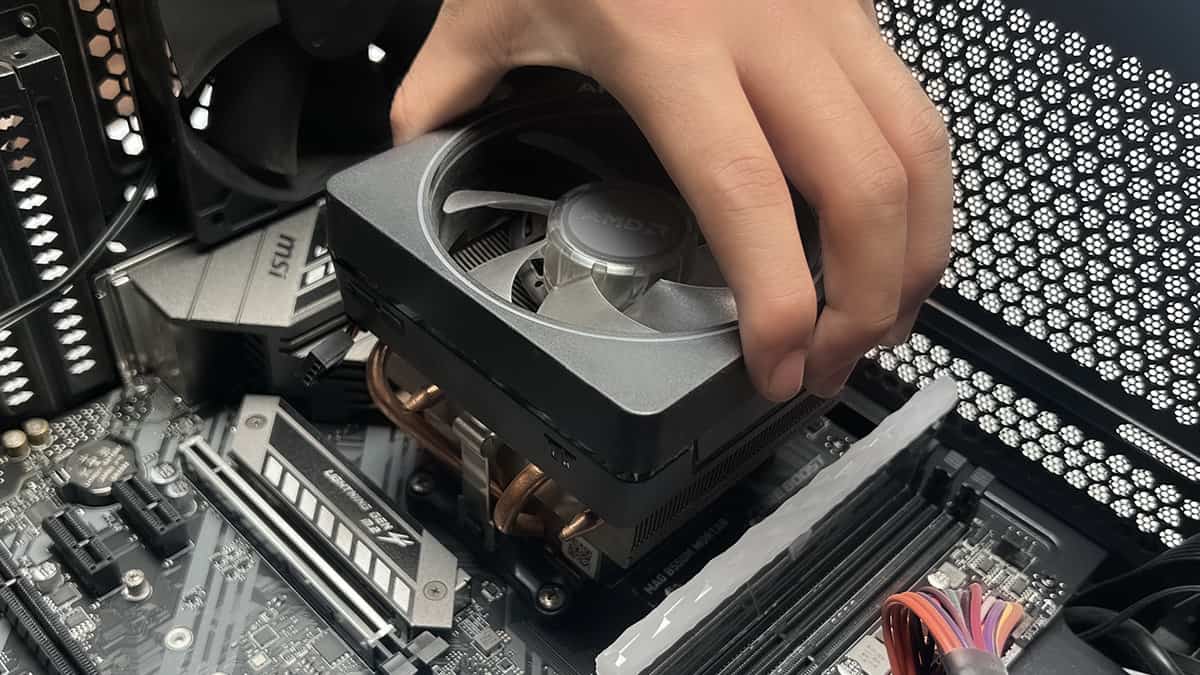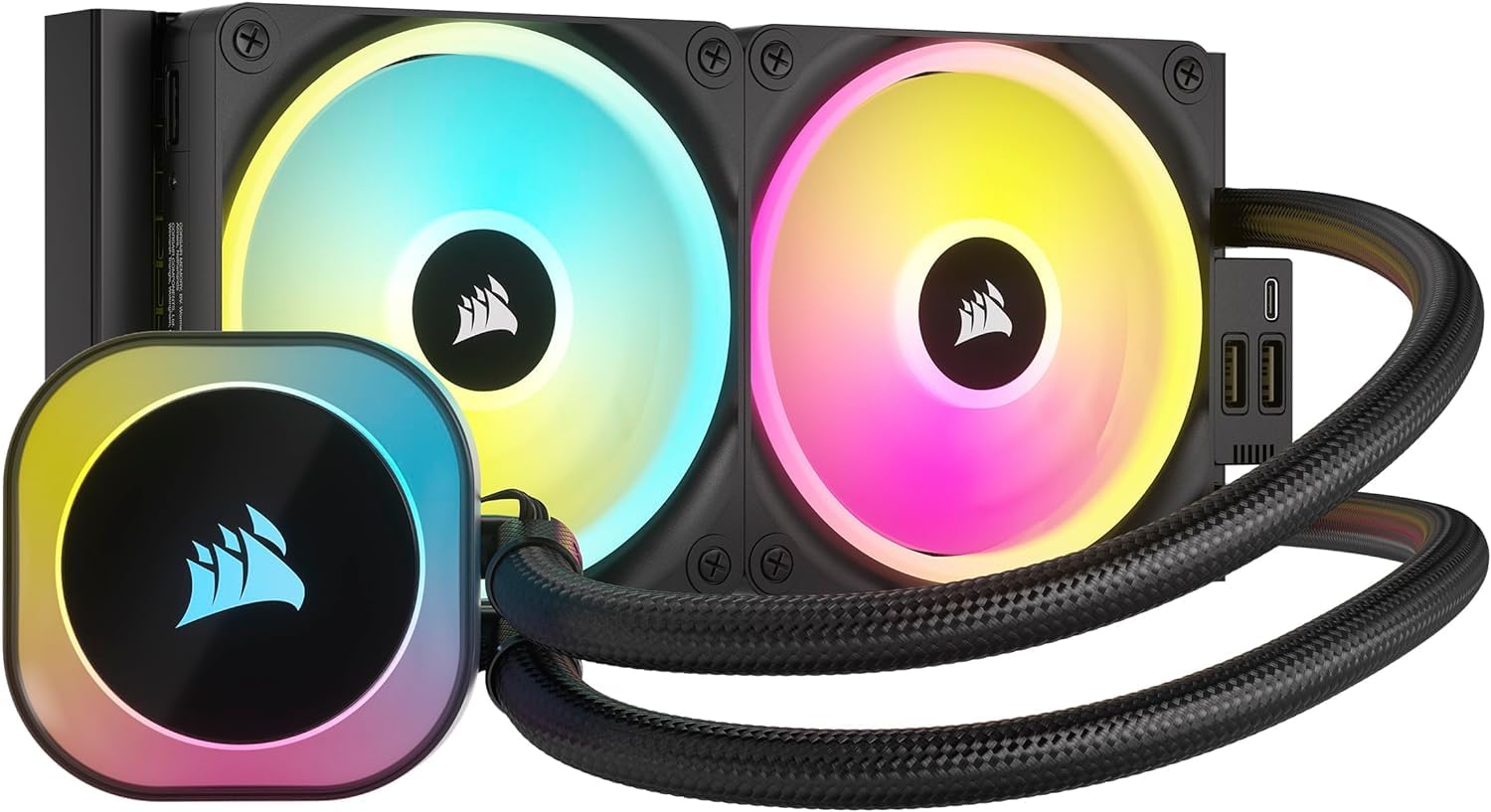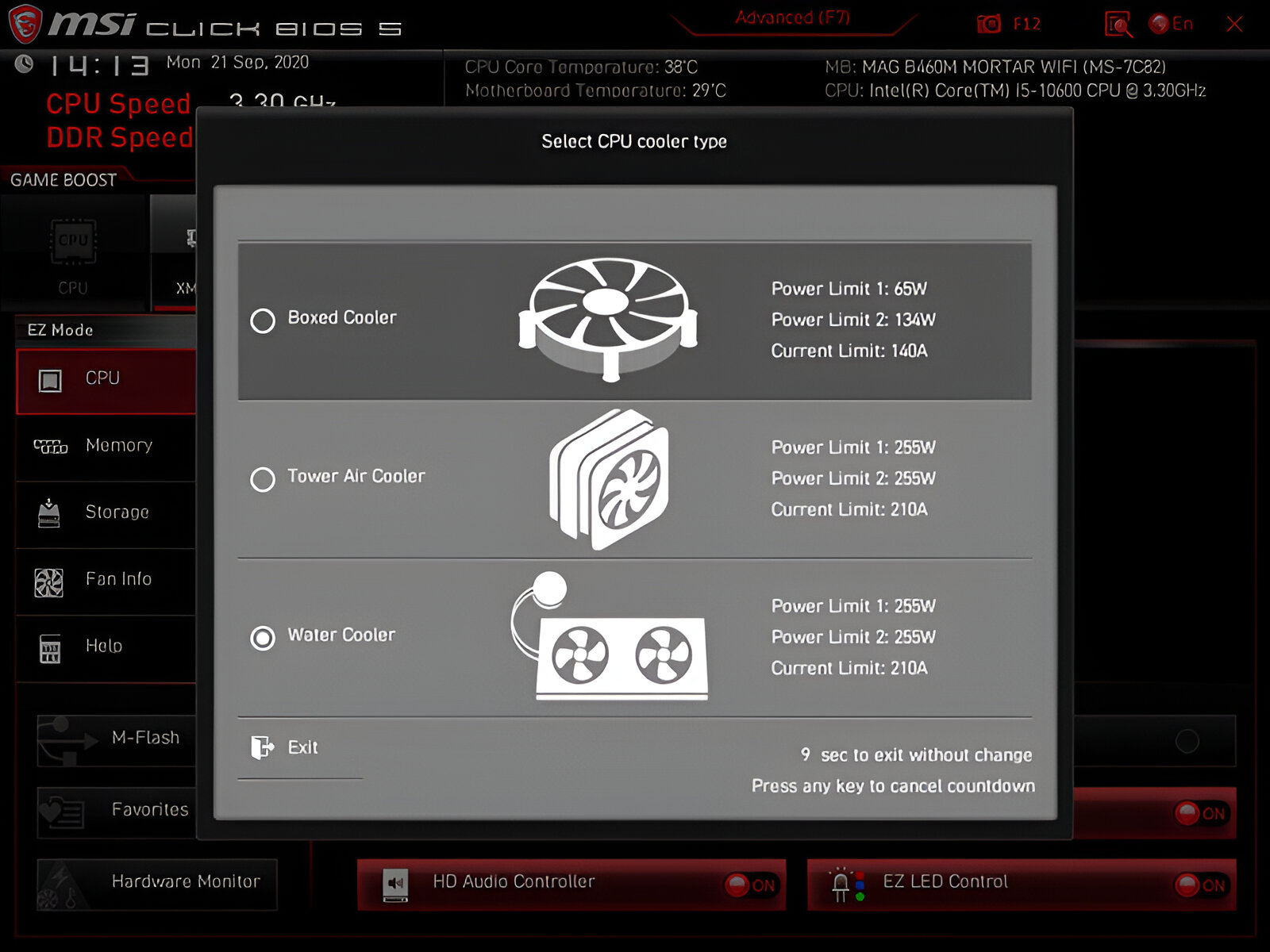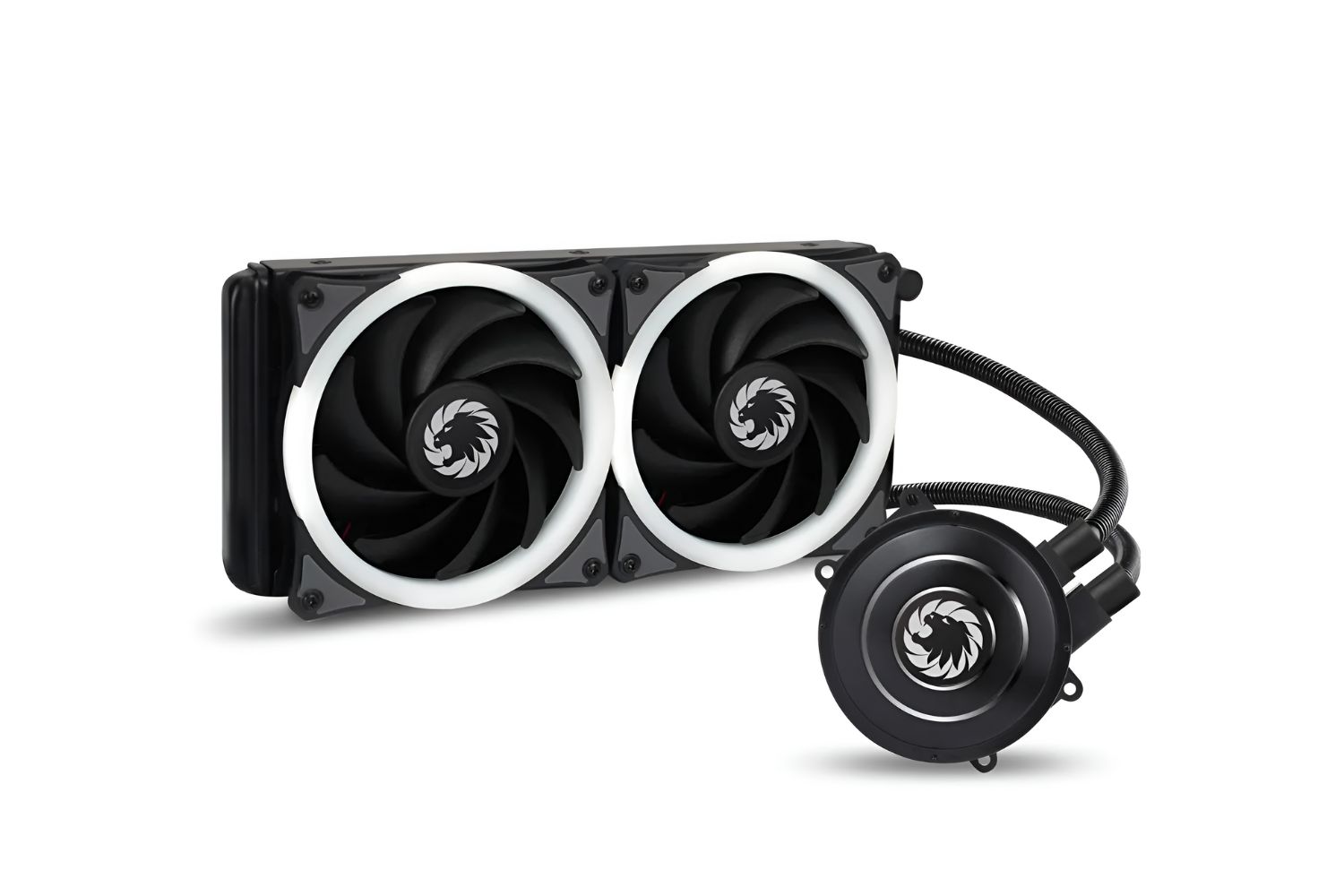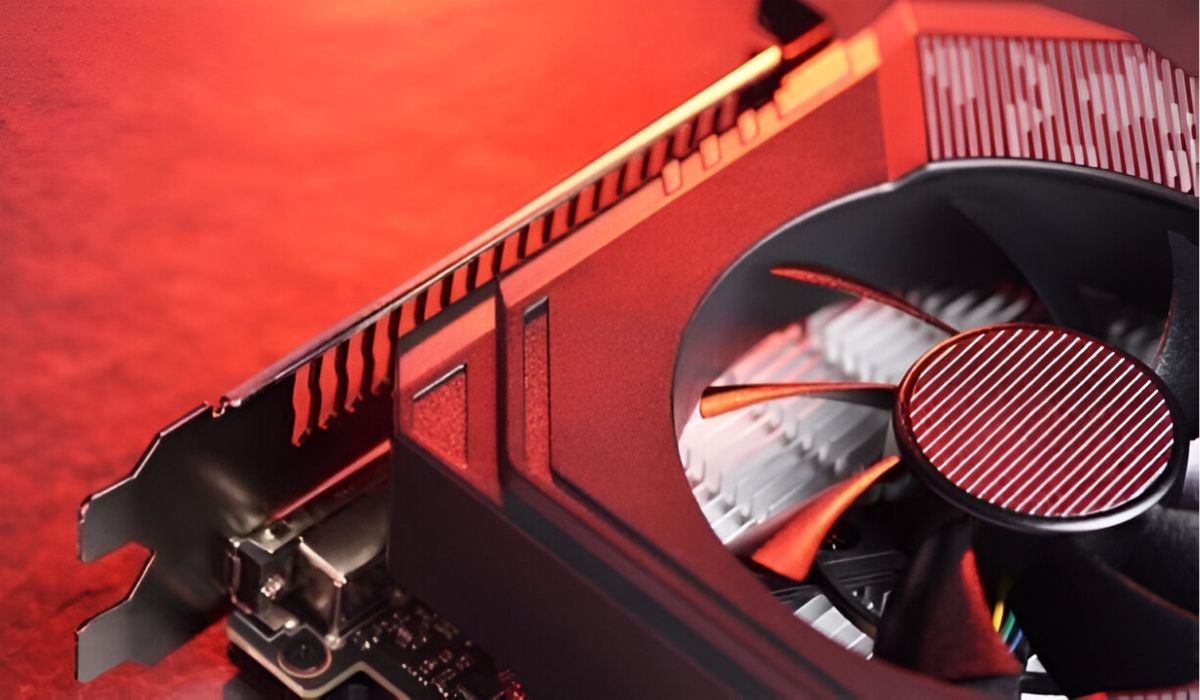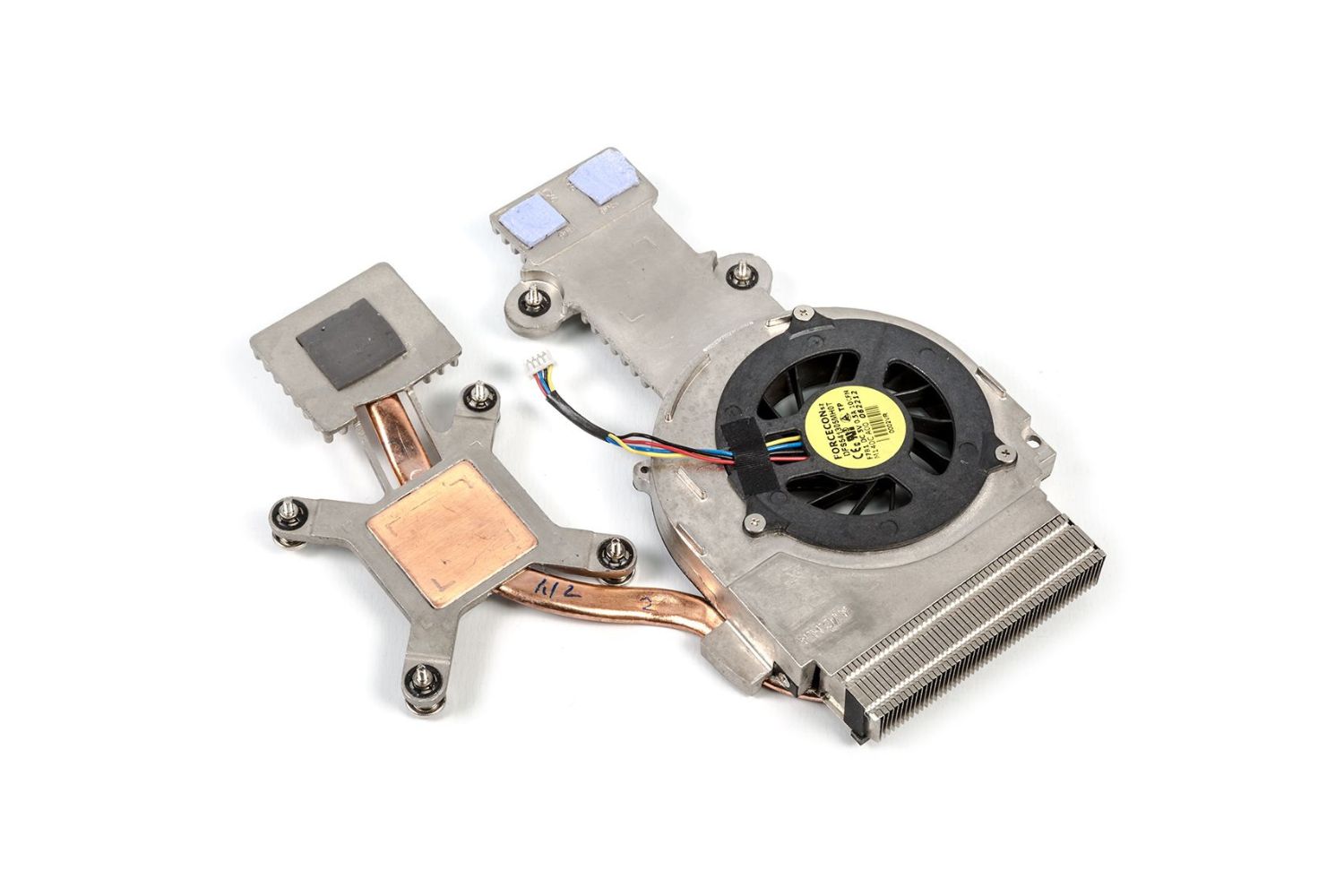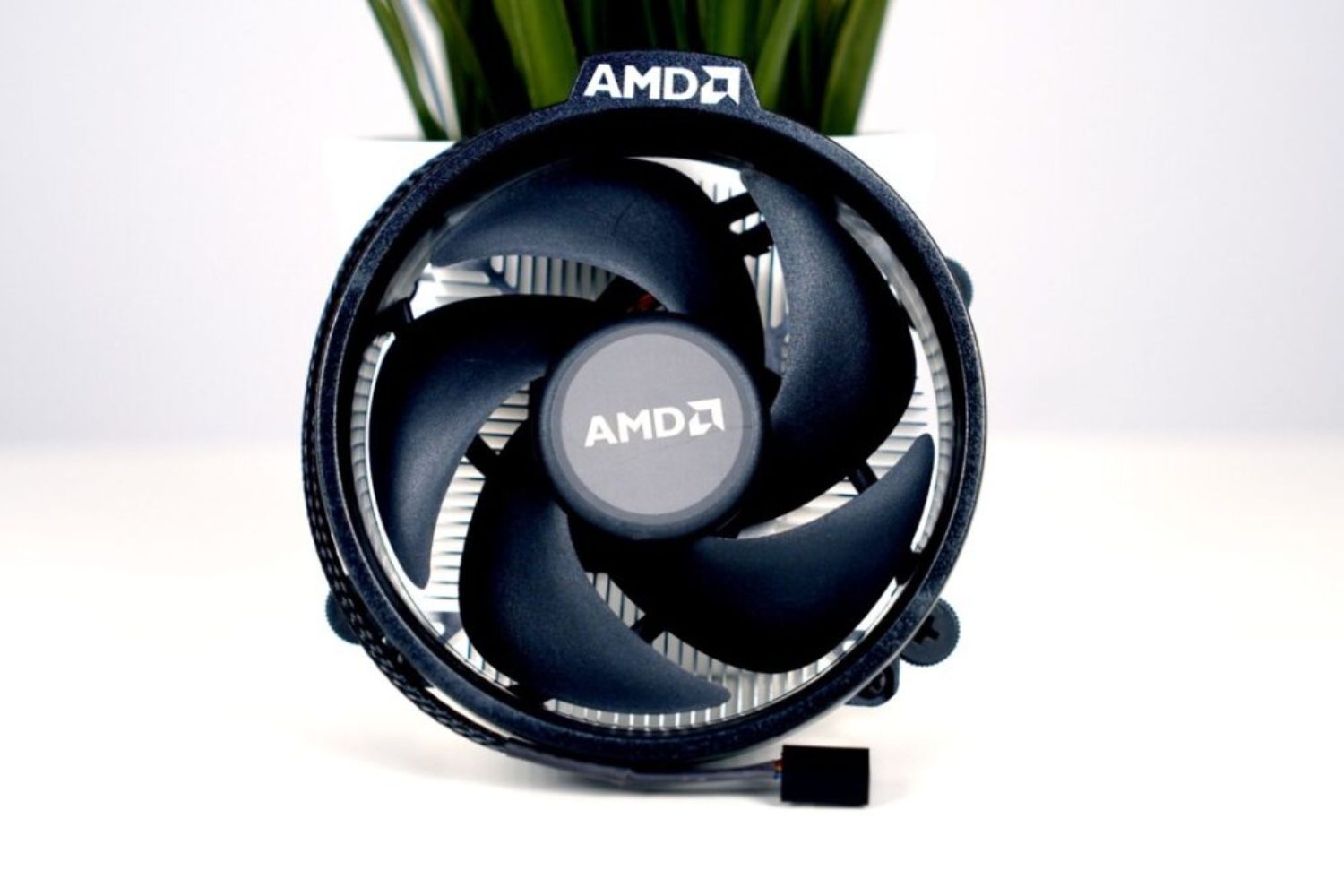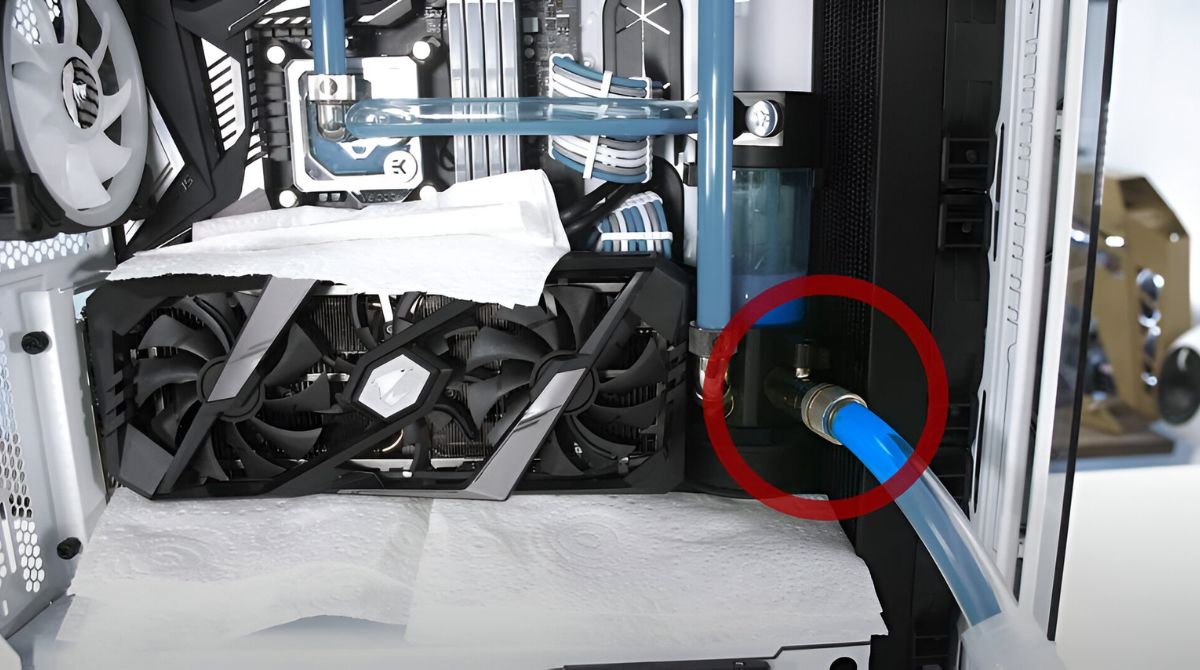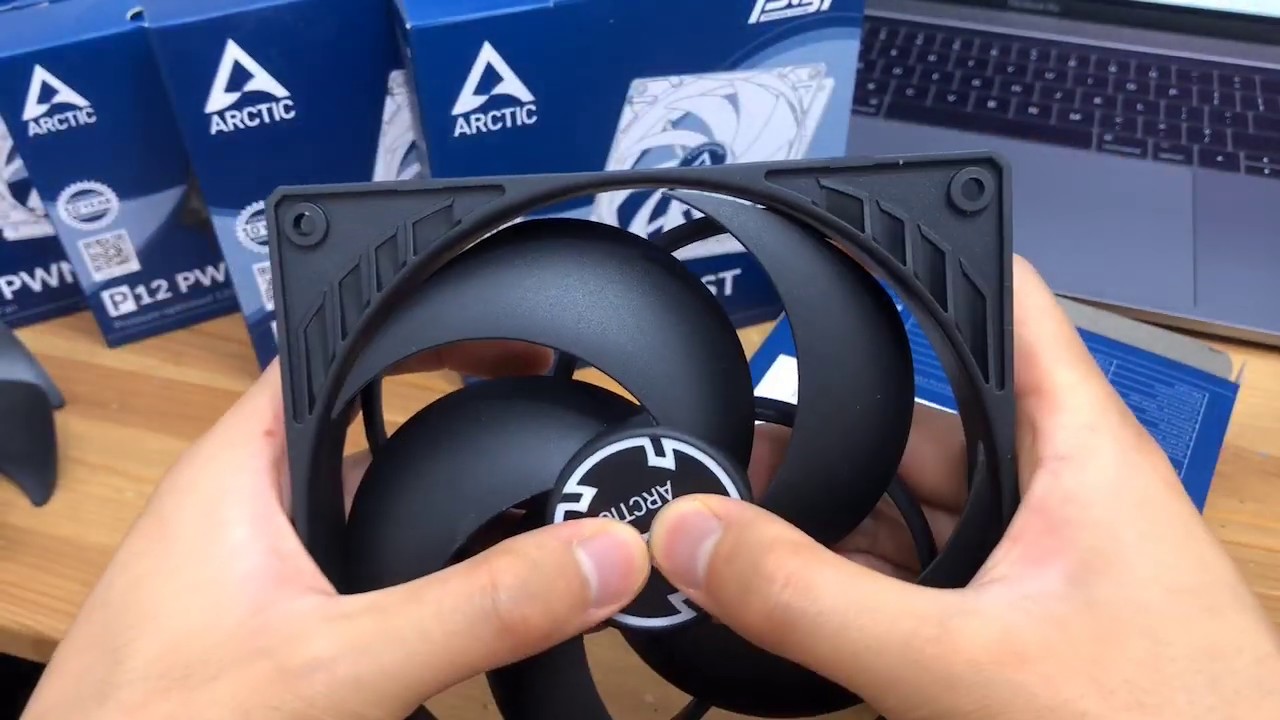Introduction
When it comes to building and maintaining a high-performance computer, the placement of the CPU cooler is a critical decision. The CPU cooler plays a vital role in dissipating heat generated by the processor and ensuring its optimal functioning. But with multiple options available, where should you put your CPU cooler?
Choosing the right placement for your CPU cooler can have a significant impact on your computer’s performance, temperature, and noise levels. In this article, we will explore the various options for CPU cooler placement and discuss the factors you should consider before making a decision.
Before diving into the different placement options, let’s understand the benefits of using a CPU cooler. The CPU cooler helps maintain the operating temperature of the processor, preventing overheating and potential damage. It also allows for better overclocking capabilities by providing efficient heat dissipation. Lastly, a well-placed CPU cooler can contribute to a quieter system by effectively managing fan speed and reducing noise levels.
Now, let’s dive into the factors you should consider before deciding on the placement of your CPU cooler.
Benefits of using a CPU Cooler
Using a CPU cooler in your computer setup offers several advantages that can greatly enhance the performance and longevity of your system. Let’s explore some of the key benefits:
1. Temperature Regulation: The primary function of a CPU cooler is to dissipate the heat generated by the processor. By keeping the temperature of the CPU within a safe range, a CPU cooler prevents overheating and potential damage to the components. Lower temperatures also contribute to stable performance and reduce the risk of system crashes or slowdowns.
2. Improved CPU Lifespan: Excessive heat can significantly impact the lifespan of your CPU. Continuous operation at high temperatures can cause the processor to degrade over time, leading to reduced performance and even failure. A CPU cooler helps maintain optimal temperature conditions, prolonging the life of your CPU and ensuring its reliability for years to come.
3. Enhanced Performance: When the CPU operates at lower temperatures, it can maintain faster clock speeds for longer durations. This allows for improved overall system performance, especially during demanding tasks such as gaming or video rendering. Overclocking enthusiasts can also benefit from a CPU cooler as it enables pushing the processor beyond its stock frequency limits while keeping temperatures under control.
4. Reduced Noise Levels: Stock CPU coolers often have small fans that need to spin at high speeds to manage the heat. This can result in excessive noise levels, which can be bothersome, particularly in quiet environments. Upgrading to a high-quality aftermarket CPU cooler with larger fans and advanced noise reduction technologies can significantly reduce noise, providing a more pleasant computing experience.
5. Customization and Aesthetics: CPU coolers come in various designs and sizes, making them a popular choice among PC enthusiasts for customization and improving the visual appeal of the system. Many CPU coolers feature RGB lighting options, allowing users to match the cooling system with their overall setup and create stunning lighting effects.
Overall, the benefits of using a CPU cooler extend beyond just temperature regulation. They contribute to the longevity of your CPU, improve system performance, reduce noise levels, and allow for personalized customization. Now that we understand the advantages of using a CPU cooler, let’s explore the factors that you should consider before deciding on its placement in your PC case.
Factors to consider before deciding the placement of a CPU Cooler
When determining the optimal placement for your CPU cooler, there are several factors that you should take into consideration. These factors will help you achieve the best cooling performance for your specific computer setup. Let’s explore them in detail:
1. Case Size and Layout: The size and layout of your PC case play a crucial role in selecting the appropriate CPU cooler placement. Consider the available space and clearance around the CPU socket and adjacent components. A smaller case may have limitations on the size and orientation of the cooler, while a larger case may offer more flexibility.
2. Airflow Management: Understanding the airflow dynamics within your case is essential. Ensure that the CPU cooler placement does not obstruct the intake or exhaust fans, as it can impede the overall airflow and lead to inefficient cooling. Ideally, the CPU cooler should receive cool air from the intake fans and exhaust the heated air towards the outtake fans.
3. Compatibility with RAM and PCIe Slots: Some CPU coolers, particularly those with large heatsinks, can interfere with the installation of high-profile RAM modules or PCIe expansion cards. Make sure that the chosen cooler placement does not hinder the accessibility or functionality of these components.
4. Clearance for Other Components: Consider the clearance between the CPU cooler and other components such as motherboard heatsinks, VRM modules, or even the power supply. It’s important to ensure that there is no interference or contact that could potentially cause damage or affect the performance of these components.
5. Maintenance and Accessibility: Keep in mind the ease of maintenance and accessibility when deciding on the CPU cooler placement. Opt for a position that allows for easy removal and cleaning of the cooler or fan, as regular maintenance is crucial for optimal performance and longevity.
6. Personal Preferences: While technical considerations should guide your decision, personal preferences also matter. If you prioritize aesthetics, you may opt for a CPU cooler placement that showcases the cooler’s design, such as a top-mounted position with a transparent side panel.
By taking these factors into account, you can make an informed decision about the ideal placement of your CPU cooler. Keep in mind that each computer setup is unique, and what works for one may not work for another. Now that you are aware of these factors, let’s explore the different options for CPU cooler placement in your PC case.
Different options for CPU Cooler Placement
When it comes to placing your CPU cooler, there are several options available, each with its advantages and considerations. Let’s explore the different placement options:
1. Top-Mounted CPU Cooler: Top-mounted placement involves positioning the CPU cooler on the top of the PC case. This placement is popular for its efficient heat dissipation and compatibility with most case designs. It utilizes the natural tendency of hot air to rise, allowing the CPU cooler to expel the heated air directly out of the case.
2. Front-Mounted CPU Cooler: With front-mounted placement, the CPU cooler is installed on the front panel of the case. This configuration is beneficial for cases that have a dedicated air intake at the front. It provides direct cool air to the CPU cooler and helps maintain lower temperatures. However, it may not be suitable for cases with limited front panel space or obstructed airflow.
3. Bottom-Mounted CPU Cooler: Bottom-mounted placement, also known as a “reverse” configuration, involves installing the CPU cooler at the bottom of the case, with the fan facing upward. This placement allows for natural convection, as cool air is drawn in from the bottom and expelled at the top, effectively dissipating heat. It can be particularly advantageous for cases that have a vented bottom or utilize a separate PSU chamber.
4. Side-Mounted CPU Cooler: Side-mounted placement places the CPU cooler on the side panel of the case. It is often used in specialized cases designed explicitly for this configuration. Side-mounted placement offers direct access to cool air, especially in cases with dedicated side-panel fans. However, it may limit compatibility with standard cases and require additional clearance for the CPU cooler’s height.
5. Back-Mounted CPU Cooler: Back-mounted placement positions the CPU cooler at the rear end of the case, near the exhaust fan. This arrangement utilizes the case’s natural airflow, allowing the CPU cooler to expel the heated air directly out of the case. It is a common placement option for smaller form factor cases or cases with limited space.
These are the primary options for CPU cooler placement. Remember that the optimal choice will depend on factors such as case design, airflow management, component compatibility, and personal preferences. Now, let’s explore the recommended CPU cooler placements for specific PC cases.
Top-Mounted CPU Cooler
The top-mounted CPU cooler placement is one of the most popular options due to its efficiency in heat dissipation and compatibility with various PC case designs. Here’s what you need to know about this placement:
Advantages:
– Efficient Heat Dissipation: The top-mounted position allows the CPU cooler to take advantage of the natural tendency of hot air to rise. As a result, the heated air is expelled directly out of the case, promoting effective heat dissipation.
– Compatibility: Top-mounted CPU coolers are compatible with the majority of PC cases available in the market. As it is a common placement option, cases are often designed to accommodate coolers in this position, providing appropriate clearances and mounting holes.
– Component Accessibility: Placing the CPU cooler on top of the case provides easy access for maintenance and cleaning. You can remove the cooler without the need to remove other components, making it convenient for regular maintenance tasks.
Considerations:
– Clearance: Before opting for a top-mounted CPU cooler, ensure that your case has sufficient clearance between the top of the case and any obstructing components such as fans, radiators, or the power supply unit (PSU). It’s crucial to ensure that the cooler will not interfere with these components.
– Restricted Airflow: In some cases, top-mounted CPU coolers can interfere with the airflow within the case. These coolers may block the natural airflow path or obstruct the case’s top-mounted exhaust fan. It’s important to choose a cooler that is designed to work efficiently in this placement and take into account the overall airflow dynamics of the case.
– RGB and Aesthetics: If you’re interested in showcasing your CPU cooler design or adding RGB lighting effects, a top-mounted placement can provide a visually appealing setup. The transparent side panel of the case allows the cooler’s aesthetics to be fully visible, creating an attractive visual centerpiece for your PC.
Overall, the top-mounted CPU cooler placement is an excellent choice for most PC cases. It promotes efficient heat dissipation, offers compatibility with various cases, and provides easy access for maintenance. However, make sure to consider the clearance, airflow management, and aesthetic preferences specific to your case before finalizing this placement option. Now, let’s explore other CPU cooler placements for different PC cases.
Front-Mounted CPU Cooler
The front-mounted CPU cooler placement is an option that is particularly beneficial for cases with dedicated air intakes at the front. Here’s what you need to know about this placement:
Advantages:
– Direct Cool Air Intake: Placing the CPU cooler at the front of the case allows it to receive cool air directly from the intake fans located in the front panel. This direct airflow provides effective cooling for the processor, helping to maintain lower temperatures.
– Improved Heat Dissipation: The front-mounted position enables the CPU cooler to expel the heated air towards the outtake fans located at the rear or top of the case. This setup promotes efficient heat dissipation, pushing the hot air away from the CPU and preventing it from recirculating within the case.
– Compatible with Intake-focused Cases: Front-mounted CPU coolers work well with cases that have optimized front panels for improved airflow. These cases typically have dust filters, ventilation holes, or mesh designs that facilitate better air intake and circulation.
Considerations:
– Compatibility and Space: Before opting for a front-mounted CPU cooler, ensure that your case has sufficient space in the front panel to accommodate both the cooler and any necessary mounting brackets. Some cases may have limited clearance due to drive cages or other components that restrict the size of the cooler that can be installed.
– Obstructed Airflow: In certain cases, front-mounted CPU coolers can obstruct the natural airflow path within the case. If the routing of cables or any other components restricts the airflow from reaching the CPU cooler, it may result in less efficient cooling. Ensure that there is proper clearance and sufficient airflow for the cooler to perform optimally.
– Maintenance and Accessibility: Front-mounted coolers can sometimes hinder maintenance tasks, such as accessing and cleaning the cooler or the intake fans. Consider the ease of removing and maintaining components in this configuration to ensure proper upkeep of the cooler and the overall system.
Overall, the front-mounted CPU cooler placement is advantageous for cases that have dedicated air intakes at the front. It provides direct cool air to the CPU cooler, promotes efficient heat dissipation, and works well with intake-focused cases. However, make sure to consider the compatibility, airflow management, and maintenance accessibility specific to your case before finalizing this placement option. Now, let’s explore other CPU cooler placements for different PC cases.
Bottom-Mounted CPU Cooler
The bottom-mounted CPU cooler placement, also known as a “reverse” configuration, involves installing the CPU cooler at the bottom of the case with the fan facing upward. Let’s delve into the details of this placement:
Advantages:
– Natural Convection: The bottom-mounted placement takes advantage of natural convection, where cool air is drawn in from the bottom of the case and rises towards the top. This upward movement allows the CPU cooler to expel the heated air from the top, effectively dissipating heat.
– Separate Cooling Chamber: Some cases feature a separate chamber or compartment at the bottom for the power supply unit (PSU) or hard drives. Placing the CPU cooler at the bottom eliminates the heat interference between the CPU cooler and other components, resulting in improved cooling efficiency.
– Enhanced Aesthetics: Bottom-mounted CPU coolers can enhance the aesthetic appeal of your PC. By showcasing the cooler’s design through a transparent side panel, you can create a visually striking centerpiece that adds a unique look to your system.
Considerations:
– Clearance and Compatibility: Before choosing a bottom-mounted CPU cooler, ensure that your case has sufficient clearance at the bottom to accommodate the cooler’s height. Verify that there are no obstructions such as drive cages or other components that may hinder the installation or interfere with the cooler’s functioning.
– Limited Case Options: Bottom-mounted CPU coolers are not as common as other placement options, and therefore, case compatibility might be more limited. Ensure that your case supports this placement before opting for a bottom-mounted cooler.
– Restricted Airflow: While natural convection is advantageous for heat dissipation, bottom-mounted CPU coolers may not be as effective in cases with limited airflow from the bottom. The availability and quality of vented areas or dedicated bottom intakes play a crucial role in the cooler’s performance in this placement.
The bottom-mounted CPU cooler placement offers the benefits of natural convection and a separate cooling chamber, along with the opportunity to enhance aesthetics. However, it is essential to consider clearance, case compatibility, and adequate airflow to ensure efficient cooling in this configuration. Now, let’s explore other CPU cooler placements for different PC cases.
Side-Mounted CPU Cooler
The side-mounted CPU cooler placement is a unique configuration that involves installing the CPU cooler on the side panel of the case. Let’s delve into the details of this placement:
Advantages:
– Direct Access to Cool Air: The side-mounted position allows the CPU cooler to have direct access to cool air from the outside. This placement is particularly beneficial when the case has dedicated side-panel fans or ventilation that can provide additional airflow to the cooler.
– Improved Cooling Potential: With the CPU cooler positioned on the side, it can take advantage of the additional cool air intake and promote efficient cooling performance. This placement can be beneficial for systems that require high cooling capacity or for overclocking enthusiasts.
– Enhanced Aesthetics: Side-mounted CPU coolers offer a visually appealing display of the cooler’s design and features. The transparent side panel of the case allows for a showcase of the cooler’s aesthetics, contributing to a visually striking and unique PC setup.
Considerations:
– Case Compatibility: Side-mounted CPU cooling is not a commonly available or standardized configuration in most PC cases. You will need to ensure that your case supports this placement option or consider specialized cases designed explicitly for side-mounted coolers.
– Clearances and Space: Side-mounted coolers may require additional clearance and space on the side panel to accommodate the cooler’s height, width, and fan assembly. Make sure that your case has sufficient space to prevent any interference with other components.
– Cable Management: Cable management can be crucial in side-mounted CPU cooler setups. Ensure that the cables are neatly organized and do not obstruct the cooler’s airflow or impede the installation process. Proper cable management will contribute to better cooling performance and aesthetics.
The side-mounted CPU cooler placement offers direct access to cool air, improved cooling potential, and enhanced aesthetics. However, it is important to consider case compatibility, clearances, and cable management to ensure optimal performance and a clean, organized setup. Now, let’s explore other CPU cooler placements for different PC cases.
Back-Mounted CPU Cooler
The back-mounted CPU cooler placement involves positioning the CPU cooler at the rear end of the case, near the exhaust fan. Let’s explore the details of this placement:
Advantages:
– Utilizes Natural Airflow: Back-mounted CPU coolers benefit from the natural airflow pattern within the case. As the exhaust fan is typically located at the rear, placing the CPU cooler in close proximity allows it to expel the heated air directly out of the case.
– Compatibility with Compact Cases: Back-mounted CPU coolers are particularly suitable for compact cases or those with limited space. The compact form factor often restricts options for CPU cooler placement, making the back-mounted position an efficient choice.
– Easy Installation: Installing a back-mounted CPU cooler is often straightforward as it requires aligning the cooler with the CPU socket and attaching it to the mounting bracket at the rear of the case. This simplicity makes it a convenient choice for those looking for a hassle-free installation process.
Considerations:
– Restricted Cooling Potential: Back-mounted CPU coolers may have slightly reduced cooling potential compared to other placement options. The proximity to the exhaust fan limits the amount of cool air that can reach the cooler. This is particularly important to consider for systems that generate significant heat or have high-performance components.
– Clearance for Components: Ensure that there is sufficient clearance between the CPU cooler and other components, such as motherboard heatsinks or rear I/O ports. Restricted clearance may hinder the installation process or even cause interference that affects the cooler’s performance.
– Noise and Ventilation: Back-mounted CPU coolers may be positioned near the exhaust fan, which can potentially lead to increased noise levels if the fan operates at high speeds. Additionally, it’s important to verify that the exhaust fan is adequately ventilated to prevent any impact on the CPU cooler’s performance or overall system airflow.
The back-mounted CPU cooler placement is an excellent option for compact cases or those with limited space. It utilizes the natural airflow and offers ease of installation. However, consider the restricted cooling potential, clearance for components, and ventilation aspects specific to your case before finalizing this placement option. Now, let’s explore other CPU cooler placements for different PC cases.
Recommended CPU Cooler Placements for Specific PC Cases
While the optimal CPU cooler placement depends on factors like case design, airflow management, and personal preferences, certain recommendations can guide you in making the right choice for specific PC cases. Let’s explore some recommended CPU cooler placements:
1. Mid-Tower ATX Cases: For mid-tower ATX cases, top-mounted or front-mounted CPU cooler placements are commonly recommended. These cases usually have sufficient clearance for top-mounted coolers and often feature front intakes that provide cool air directly to the CPU cooler.
2. Full-Tower ATX Cases: Full-tower ATX cases offer more space and flexibility. Top-mounted, front-mounted, or even side-mounted CPU coolers are viable options for these cases, depending on the specific airflow dynamics and clearance requirements of the chosen cooler.
3. Small Form Factor (SFF) Cases: Small form factor cases often have limited space and restricted airflow. In this scenario, low-profile or specialized SFF CPU coolers that are compatible with the case’s layout are recommended. These coolers are designed to provide efficient cooling in compact environments.
4. Open-Air Test Benches: Open-air test benches, commonly used for system benchmarking and testing, provide ample space and unrestricted airflow. In such cases, top-mounted or side-mounted CPU coolers can be suitable options, allowing for easy access and optimal cooling performance.
Remember to consult the case manufacturer’s specifications and documentation for any specific CPU cooler compatibility guidelines they may provide. Additionally, always take into account the individual airflow design of the case and the specific cooling requirements based on your system’s components and usage.
Lastly, it’s worth considering aftermarket CPU coolers as they often offer superior cooling performance compared to stock coolers provided with processors. These third-party coolers are available in various sizes and configurations, ensuring compatibility with a wide range of cases and offering better heat dissipation capabilities.
By understanding the characteristics of your specific PC case and consulting compatibility guidelines, you can make an informed decision on the optimal CPU cooler placement to achieve efficient cooling and maintain optimal system performance.
Conclusion
Deciding on the placement of your CPU cooler is a crucial consideration when it comes to optimizing cooling performance and maintaining the longevity of your system. By understanding the benefits of using a CPU cooler and considering factors such as case size, airflow management, and component compatibility, you can make an informed decision about the ideal placement for your specific PC setup.
We explored various options for CPU cooler placement, including top-mounted, front-mounted, bottom-mounted, side-mounted, and back-mounted placements. Each option comes with its advantages and considerations, depending on factors such as natural airflow, case design, and clearance requirements.
Additionally, we discussed the recommended CPU cooler placements for specific PC cases. These recommendations provide guidance for mid-tower ATX cases, full-tower ATX cases, small form factor (SFF) cases, and open-air test benches. However, it’s essential to consult case specifications, documentation, and compatibility guidelines to ensure proper fitment and cooling performance.
Lastly, consider the benefits of aftermarket CPU coolers over stock coolers, as they often provide superior cooling performance and customization options.
By carefully evaluating the aforementioned factors, consulting case specifications and guidelines, and taking into account your specific cooling requirements and personal preferences, you can select the optimal CPU cooler placement that will not only enhance cooling efficiency but also contribute to the overall performance and aesthetics of your PC setup.







